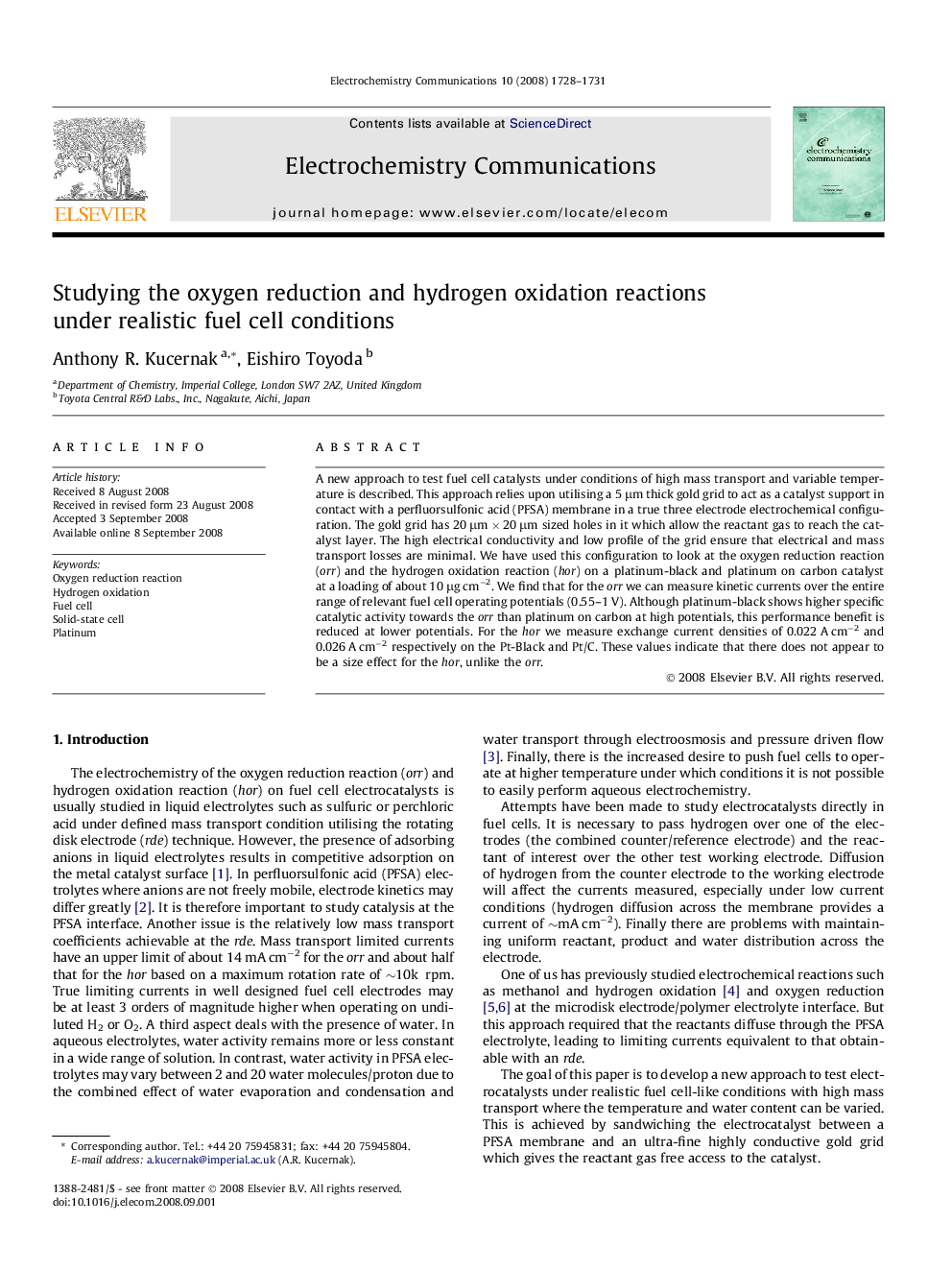| Article ID | Journal | Published Year | Pages | File Type |
|---|---|---|---|---|
| 181618 | Electrochemistry Communications | 2008 | 4 Pages |
A new approach to test fuel cell catalysts under conditions of high mass transport and variable temperature is described. This approach relies upon utilising a 5 μm thick gold grid to act as a catalyst support in contact with a perfluorsulfonic acid (PFSA) membrane in a true three electrode electrochemical configuration. The gold grid has 20 μm × 20 μm sized holes in it which allow the reactant gas to reach the catalyst layer. The high electrical conductivity and low profile of the grid ensure that electrical and mass transport losses are minimal. We have used this configuration to look at the oxygen reduction reaction (orr) and the hydrogen oxidation reaction (hor) on a platinum-black and platinum on carbon catalyst at a loading of about 10 μg cm−2. We find that for the orr we can measure kinetic currents over the entire range of relevant fuel cell operating potentials (0.55–1 V). Although platinum-black shows higher specific catalytic activity towards the orr than platinum on carbon at high potentials, this performance benefit is reduced at lower potentials. For the hor we measure exchange current densities of 0.022 A cm−2 and 0.026 A cm−2 respectively on the Pt-Black and Pt/C. These values indicate that there does not appear to be a size effect for the hor, unlike the orr.
